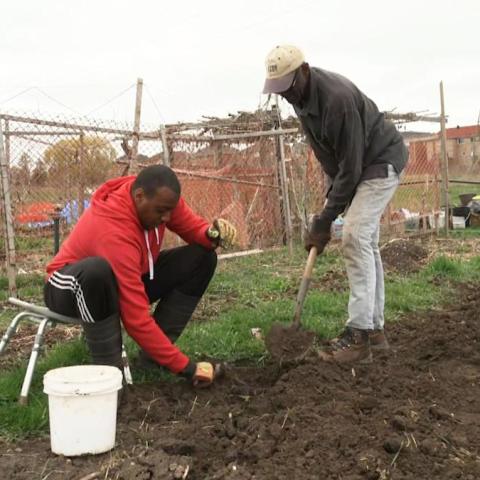President Trump recently signed an executive order aimed at helping homeless veterans. This order directs the Department of Veterans Affairs (VA) to establish a National Warrior Independence Center on its West Los Angeles campus. The goal is to house up to 6,000 veterans.
The order emphasizes that veterans deserve gratitude and support, asserting that the government hasn’t always prioritized their needs. Trump tasked VA Secretary Doug Collins with coming up with an action plan to have this housing ready by January 1, 2028. He also asked for reports within 60 days on expanding VA services, including more flexible hours and virtual healthcare options.
The existing Veterans Affairs Supportive Housing program (HUD-VASH) is designed to support veterans with housing vouchers. However, in a city where nearly 3,000 veterans are homeless, many vouchers remain unused, often due to delays or landlord resistance. In 2024, only 62% of the 8,453 available HUD-VASH vouchers in Greater Los Angeles were actually being utilized.
This initiative comes at a crucial time, particularly amid proposed cuts to VA staffing, which some critics argue could negatively impact the agency’s healthcare services. Rep. Chris Deluzio noted these staffing reductions could have serious consequences for veterans receiving care.
The executive order arrives as the VA is awaiting a decision from the U.S. 9th Circuit Court of Appeals, regarding whether the agency has upheld its duty to provide adequate housing. A previous ruling demanded that the VA create hundreds of housing units on the campus. Although the VA plans to appeal, veterans see the executive order as a beacon of hope. Iraq war veteran Rob Reynolds expressed optimism, calling the signed order a significant step forward for those fighting for veterans’ housing needs.
The Veterans Collective, a group involved in developing supportive housing, praised the initiative and hopes to complete 1,200 units by the end of Trump’s term. They anticipate that Trump might visit the campus to see the developments first-hand.
However, not all reactions are entirely positive. Anthony Allman of Vets Advocacy emphasizes that while the executive order is a step in the right direction, more comprehensive solutions are needed beyond just housing—like community development and workforce support.
Historically, the West Los Angeles VA campus has a rich legacy of providing care for veterans, once housing around 6,000 individuals, featuring amenities like a chapel and theater. As of 2024, Los Angeles had the highest number of homeless veterans in the nation, reflecting a growing crisis that many believe requires immediate action.
Ultimately, the goal of the executive order is not just to provide shelter but to create an environment where veterans can thrive. With ongoing discussions about expanding medical services at other VA facilities, there is hope that veterans will receive improved care and support across the nation.
For further insights, you can refer to the VA Greater Los Angeles Healthcare System for more details about homeless veterans and available support programs.






:max_bytes(150000):strip_icc()/ms-northern-lights-0f517b04413243eaa00e62a5a3d0f28a.jpg?w=480&resize=480,480&ssl=1)













